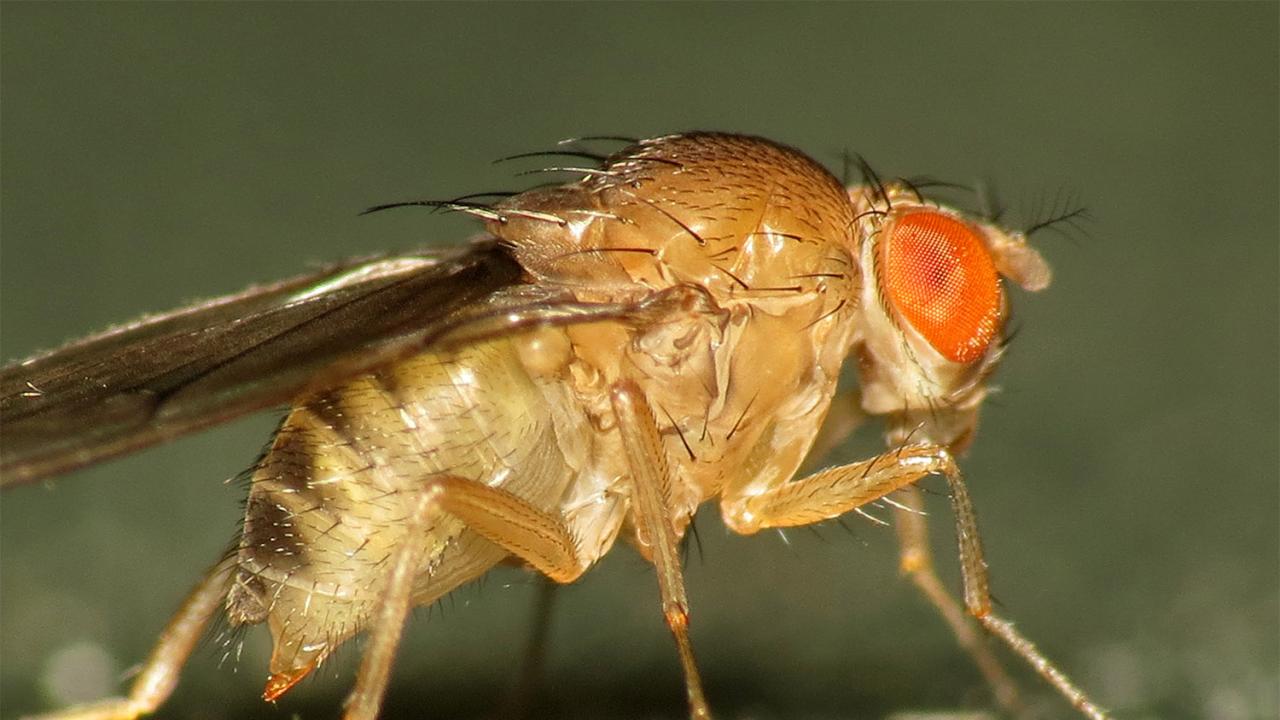
Fly Genomes Provide Clues to Parallel Evolution
For a long time, scientists who studied evolution were limited to what was observable with the naked eye. But physical characteristics are influenced by the genetics of an organism, and technological advances in the field of molecular biology helped reveal to scientists the microscopic machinery underlying evolution.
In a paper appearing in PLOS Genetics, Professor David Begun, Department of Evolution and Ecology in the UC Davis College of Biological Sciences, compared the genomes of different fly species to understand how genes—both within and between species—evolve adaptively. He found that two fly species that diverged from a common ancestor some 50 million years ago, exhibited parallel evolution on both short- and long-term timescales.
Begun’s research is helping scientists better understand parallel evolution on the genetic level.
“When you see a similar pattern evolving repeatedly in multiple lineages that suggests that you’ve observed something important,” said Begun. “You’re learning something about the general rules regarding how evolution might occur.”
A tale of two flies
Parallel evolution occurs when distinct but related species independently evolve similar traits. Scientists can study evolution at the genetic level by measuring how genes are expressed, which can provide an overall genetic view of a specific population of a species. This data can then be compared to a different population of the same species, allowing scientists to note genetic differences between populations.
While the fly species Drosophila melanogaster and Drosophila hydei diverged some 50 million years ago to Africa and South America respectively, today they inhabit similar locations. Due to human activity, they’re both widespread species that have recently colonized high latitude locations.
Begun sampled flies from both species in high and low latitude locations, including Portland, Maine and Panama City, Panama. For each species, he compared the samples from the two locations, measuring differences in gene frequency between populations. Then he compared the two species.
The results revealed the two fly species share more genes, indicating more signs of recent adaptive differentiation than expected. With this comparison across latitudes, genetic variation between populations occurred on a timescale of a couple hundred years.
But according to Begun, the bigger take-home from the study was the magnitude of parallelism between fly species increased when the flies were compared on a long-term timescale.
Predicting adaptive evolution?
To extend the timescale to millions of years, Begun broadened the experiment to include D. mojavensis (a close relative of D. hydei), and D. simulans, (a close relative of D. melanogaster). All four species pairs were compared to each other.
Begun observed a “striking level of parallel adaptation” among the pairs.
While there’s no explanation yet, Begun’s study suggests that there may be some fundamental predictability regarding adaptive evolution in the Drosophila genus.
“At this point we can only speculate about the biological basis of really any of the potential adaptive evolution we observed,” Begun said. “It raises a lot more questions.”
For Begun, genomic tools provide scientists with an approach to understand evolutionary change that’s less prone to the biases of the specific phenotypes that biologists traditionally prefer to measure.
“Changes that have very small fitness effects, which you could really not hope to measure well in the field or in the laboratory, can have big effects on gene frequency differences,” he said. “Looking at population genetic variation is probably the only way to try to understand that process.”
Begun authored the study with Li Zhao, of the Laboratory of Evolutionary Genetics and Genomics at Rockefeller University. Funding for the study was provided by the National Institutes of Health.
